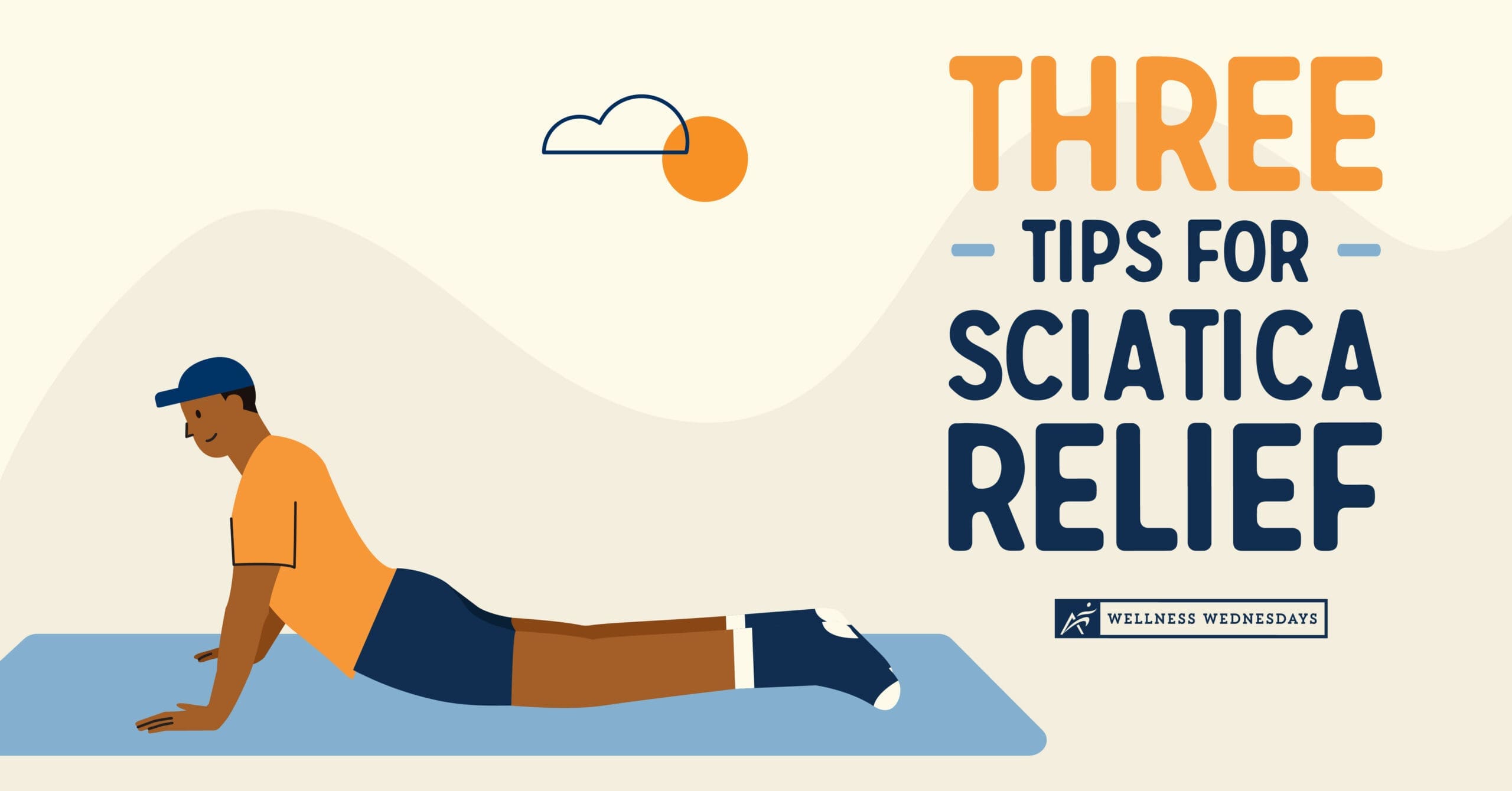Sciatica can cause irritating, sudden pain from your lower back to the back of your legs. Often, there are common causes and factors that may be putting pressure on the sciatic nerve. Continue reading for three tips for sciatica relief, as well as the common symptoms, causes, and how Airrosti can help!
Common Symptoms of Sciatica
The sciatic nerve is the longest nerve in the body, expanding from the lower back into the hips, and along the back of each leg. Because of this, sciatica or sciatic-like symptoms may be felt anywhere along this area.
Below are a few symptoms associated with sciatica:
- Sharp lower back pain.
- Pain that originates in the lower back or hip and radiates along the path of the sciatic nerve and travels down the back of the leg.
- Constant or shooting pain in one side of the buttock or leg.
- Sciatica usually only occurs on one side of the body and rarely affects both sides simultaneously.
- Weakness or numbness when moving the leg, which may cause difficulty walking.
Top 3 Tips for Sciatica Relief
Practice Proper Posture: Proper posture can help alleviate sciatica symptoms. Ensure that you’re sitting and standing with your back straight and your shoulders back. For work or activities, use a chair with good lumbar support and avoid sitting for prolonged periods without stretching breaks.
Try Heat and Ice Therapy: Applying heat or ice packs to the affected area can help reduce inflammation and provide relief. For initial onset, utilize ice. Ice area for 15 – 20 minutes on then off for at least 40 minutes. Repeat 2 – 3 times per day.
- Stretching and Exercising: Keeping active with low impact stretches and exercises can help alleviate sciatica, as well as strengthen core muscle groups surrounding your spine. For exercises that can help sciatica, click here.
What Causes Sciatica?
- Herniated Disc: The spine’s vertebrae are cushioned by rubber like discs that provide mobility. If a disc in the lumbar region tears or bulges, it can irritate the sciatic nerve, causing sciatica.
- Piriformis Syndrome: The small piriformis muscle behind the gluteus maximus can spasm and compress the sciatic nerve, leading to sciatic pain. Though less common than a herniated disc, it can significantly affect mobility.
- Pregnancy: Sciatica can develop during pregnancy, especially in the third trimester due to weight gain and fluid retention, which puts pressure on the sciatic nerve. This pain typically resolves with conservative care but may take months to fully alleviate.
- Other Conditions: Osteoarthritis, weight gain, lack of physical activity, or direct injury can also cause sciatica by affecting the spine and increasing pressure on the sciatic nerve.
Still Struggling with Sciatica?
If you’ve tried these tips and nothing seems to help relieve your sciatic pain, schedule an in-person or telehealth appointment with an Airrosti Provider!
Your Airrosti Provider will assess your condition and create a personalized treatment plan for you, as well as provide hands-on manual therapy (or self-guided myofascial release via telehealth). In most cases, injuries are often resolved within 3.2 visits (based on patient-reported outcomes).
For more information, call us at (800) 404-6050.
View our Medical Disclaimer here.









